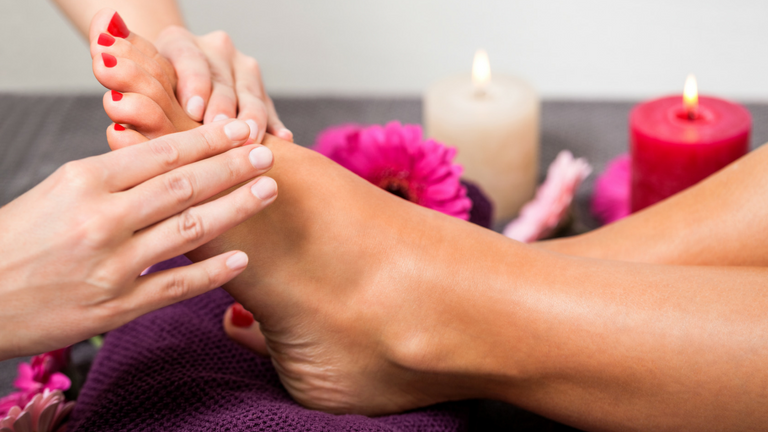
n the realm of different medicine and alternative recovery, reflexology attracts attention as a remarkable and significantly popular technique. This old therapeutic technique, based upon the principle that details factors on the feet, ears, and hands represent different body components and organs, has actually been mesmerizing both experts and clients alike for centuries.
Revealing the Essence of Reflexology Reflexology is much more than simply a foot massage; it’s a systematic method that uses pressure to certain points to advertise recovery and equilibrium throughout the body. The underlying concept suggests that these stress factors are connected to various body organs and body systems through energy networks. By promoting these factors, reflexologists intend to clear obstructions, improve blood circulation, and recover the body’s all-natural equilibrium.
– Leonardo da Vinci The Historical Tapestry of Reflexology While the modern-day method of reflexology was established in the 20th century, its roots can be traced back to old human beings. Standard Chinese medicine has actually long identified the interconnectedness of body components, influencing the advancement of reflexology as we recognize it today.
In the very early 1900s, Dr. William Fitzgerald presented the concept of “zone therapy” to the Western globe, which later progressed right into modern reflexology through the work of Eunice Ingham in the 1930s. Ingham, typically described as the “mom of reflexology,” mapped the whole body onto the feet, developing the foundation for modern reflexology practices.
The Science Behind the Practice While doubters might examine the clinical basis of reflexology, advocates argue that its advantages are rooted in the body’s neurological and energy systems. The application of stress is thought to stimulate the nervous system, advertising relaxation and decreasing tension. Some researchers suggest that reflexology might set off the launch of endorphins, the body’s natural pain-relieving and mood-enhancing chemicals.
Prospective Benefits and Applications Advocates of reflexology declare a large range of benefits, including:
Stress and anxiety reduction and leisure Improved blood circulation Pain monitoring, particularly for migraines and neck and back pain Enhanced rest quality Boosted immune system function Alleviation of gastrointestinal issues Support for hormone equilibrium While clinical research on reflexology is recurring, lots of individuals report considerable enhancements in their general wellness after getting treatments. It’s essential to note that reflexology is usually considered a corresponding therapy and must not change traditional medical treatment.
The Reflexology Experience A normal reflexology session lasts in between 30 to 60 minutes. The specialist starts by examining the client’s health and wellness history and present worries. The customer after that removes their shoes and socks and sits comfortably or exists down. Utilizing 錦糸町 , fingers, and hands, the reflexologist uses varying degrees of stress to particular points on the feet, hands, or ears.
Lots of individuals explain the experience as deeply loosening up, usually reporting a feeling of warmth or prickling feelings throughout their body during the session. Some might also drop asleep, stiring up feeling revitalized and revitalized.
Integrating Reflexology right into Modern Wellness As the world increasingly accepts holistic techniques to health and wellness, reflexology has actually found its area in medspas, wellness facilities, and even some medical facilities. It’s typically made use of combined with various other treatments such as massage therapy, aromatherapy, and acupuncture to create comprehensive health experiences.
For those thinking about checking out reflexology in the house, there are various self-help techniques and devices offered. From simple foot rollers to thorough reflexology graphes, individuals can discover to apply standard principles of reflexology to enhance their day-to-day health routines.
The Future of Reflexology As study in the area of complementary and alternate medicine continues to progress, reflexology may obtain additional acknowledgment in the medical community. Continuous researches are discovering its potential applications in different health and wellness conditions, from stress and anxiety and anxiety to cancer treatment support.
“The feet are the mirror of the body.” – Eunice Ingham Whether considered as a clinical method to recovery or an all natural art kind, reflexology supplies a special point of view on the body’s interconnectedness. As even more people seek natural and non-invasive ways to sustain their health and wellness, this old method proceeds to locate importance in our contemporary globe, inviting us to explore the recovery potential that lies at our fingertips– or rather, at our feet.
Revealing the Essence of Reflexology Reflexology is much more than just a foot massage therapy; it’s an organized technique that uses stress to particular points to promote recovery and equilibrium throughout the body. – Leonardo da Vinci The Historical Tapestry of Reflexology While the contemporary method of reflexology was established in the 20th century, its origins can be traced back to ancient people. The Science Behind the Practice While skeptics might examine the scientific basis of reflexology, supporters say that its benefits are rooted in the body’s neurological and power systems. The Reflexology Experience A typical reflexology session lasts in between 30 to 60 mins. – Eunice Ingham Whether saw as a scientific strategy to recovery or an alternative art type, reflexology supplies an unique viewpoint on the body’s interconnectedness.